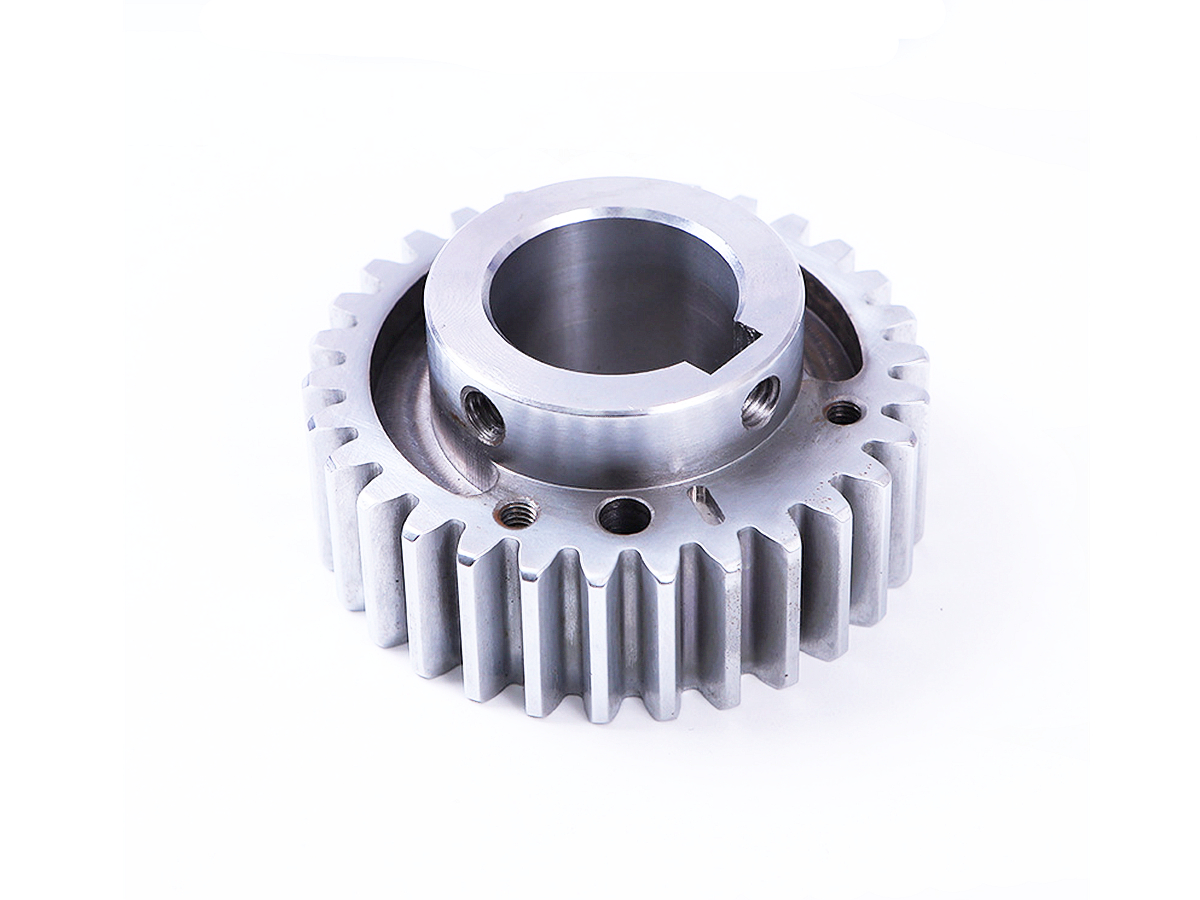Custom CNC Machining for High-Precision Gears in Automation Systems
Introduction to CNC Machined Gears for Automation Systems
Industries like automation and robotics depend heavily on precisely engineered gears to ensure accurate movement, reliability, and operational efficiency. High-precision gears require exceptional dimensional accuracy, excellent surface finishes, and stringent mechanical properties. Materials like alloy steel (4140, 8620), stainless steel (SUS304, SUS316), aluminum alloys (7075, 6061), and advanced engineering plastics (PEEK, Acetal) are typically chosen to deliver maximum performance, strength, and wear resistance.
With advanced CNC machining services, automation gear components can be precisely fabricated to tight tolerances, ensuring high efficiency, low backlash, and extended service life, even under continuous or high-speed operations.
Gear Material Performance Comparison
Material | Tensile Strength (MPa) | Wear Resistance | Corrosion Resistance | Typical Applications | Advantage |
|---|---|---|---|---|---|
950-1200 | Excellent | Moderate | Drive gears, planetary gears | High strength, good toughness | |
520-720 | Good | Excellent | Food-grade gears, medical automation | Corrosion-resistant, hygienic | |
540-570 | Moderate-High | Good | Lightweight automation systems | Lightweight, high strength-to-weight ratio | |
60-70 | Excellent | Good | Low-load, high-speed gears | Low friction, minimal lubrication required |
Material Selection Strategy for CNC Machined Gears
Choosing materials for high-precision CNC machined gears requires careful evaluation of strength, operational loads, corrosion resistance, and wear characteristics:
High-load automation systems ' drive gears and planetary gearboxes perform best with Alloy Steel 4140, offering tensile strength up to 1200 MPa and exceptional toughness.
Automation systems operating in corrosive or hygienic environments, like medical or food automation, utilize Stainless Steel SUS304 for superior corrosion resistance (ASTM B117 >1000 hrs) and good mechanical durability.
Aluminum 7075 is ideal for lightweight robotic and automation systems, providing a favorable strength-to-weight ratio (570 MPa tensile strength) and moderate corrosion resistance.
Acetal (POM) gears are optimal for low-load, high-speed applications due to their low friction coefficient, excellent wear resistance, and minimal lubrication requirements.
CNC Machining Processes for High-Precision Gears
CNC Machining Process | Dimensional Accuracy (mm) | Surface Roughness (Ra μm) | Typical Applications | Key Advantages |
|---|---|---|---|---|
±0.005-0.01 | 0.2-0.8 | Complex gears, precision components | High accuracy, excellent surface finish | |
±0.01-0.02 | 0.4-1.6 | Spur gears, shafts, pinions | Superior rotational accuracy | |
±0.005-0.01 | 0.4-1.2 | Helical, worm gears, high-volume gear sets | High efficiency, excellent repeatability | |
±0.002-0.005 | 0.1-0.4 | Precision-ground gears, hardened gears | Exceptional precision, ultra-smooth finish |
CNC Process Selection Strategy for Gear Components
Selecting the appropriate CNC machining process depends on gear complexity, tolerance requirements, and production volumes:
Complex gear profiles and helical gears requiring high precision (±0.005 mm) and fine surface finishes (Ra ≤0.8 µm) utilize advanced 5 Axis CNC Milling.
Standard spur gears, shafts, or pinions demanding high rotational precision (±0.01–0.02 mm) benefit significantly from CNC Turning.
CNC Gear Hobbing is ideal for efficient and accurate production of worm gears, helical gears, and high-volume gear sets, achieving precise dimensional accuracy (±0.005 mm).
CNC Grinding is essential for finishing hardened gears requiring extreme precision (±0.002–0.005 mm) and exceptional surface smoothness (Ra ≤0.4 µm), ideal for critical gear components in high-performance automation systems.
Surface Treatment Performance Comparison for Gear Components
Treatment Method | Surface Roughness (Ra μm) | Wear Resistance | Corrosion Resistance | Surface Hardness | Typical Applications | Key Features |
|---|---|---|---|---|---|---|
0.4-0.8 | Excellent | Moderate (ASTM B117 ~200 hrs) | HRC 55-62 | Drive gears, heavy-load gears | Enhanced wear resistance, strength | |
0.2-0.6 | Superior | Good (ASTM B117 >400 hrs) | HRC 60-70 | Precision gears, hardened gear surfaces | Increased hardness, low friction | |
0.4-1.0 | High | Excellent (ASTM B117 >1000 hrs) | HV 500-600 | Corrosion-resistant gears | Superior corrosion resistance, uniform coating | |
0.6-1.2 | Moderate-High | Excellent (ASTM B117 >800 hrs) | HV 200-400 | Aluminum gear components | Corrosion protection, enhanced durability |
Surface Treatment Selection for CNC Machined Gears
Selecting surface treatments involves balancing wear resistance, corrosion protection, and operating environment:
High-load drive gears utilize Carburizing to achieve deep surface hardness (HRC 55-62), significantly enhancing durability and fatigue resistance.
Precision gears requiring minimal friction and exceptional surface hardness benefit from Nitriding (HRC 60-70), providing superior wear resistance and longer service life.
Gears in highly corrosive or hygienic environments apply Electroless Nickel Plating for excellent corrosion resistance (ASTM B117 >1000 hrs) and uniform hardness (HV 500-600).
Lightweight aluminum gears frequently employ Anodizing to ensure robust corrosion protection (ASTM B117 >800 hrs) and increased durability.
Typical Prototyping Methods for Gears
CNC Machining Prototyping: Accurate, reliable prototypes suitable for performance verification and precise tolerance assessment.
Metal 3D Printing (Powder Bed Fusion): Rapid prototyping method for functional testing and initial performance evaluation.
Quality Assurance Procedures
Gear Profile Inspection (CMM and Gear Measurement Systems): Ensuring profile accuracy (ISO 1328).
Surface Quality Evaluation (Profilometer): Precise surface roughness verification.
Material Hardness Testing (Rockwell, Vickers): Confirming surface and core hardness per specification.
Non-destructive Testing (Magnetic Particle & Ultrasonic): Verify structural integrity and identify potential defects.
Full Documentation (ISO 9001 Compliance): Ensuring comprehensive traceability and quality assurance.
Industry Applications
Robotic drive systems.
Precision automation gearboxes.
Conveyor and indexing equipment.
Related FAQs:
Why is CNC machining preferred for precision gear manufacturing?
What materials are best for automation system gears?
Which surface treatments enhance gear performance?
How are CNC machined gears inspected for quality?
Which industries benefit most from CNC machined precision gears?

